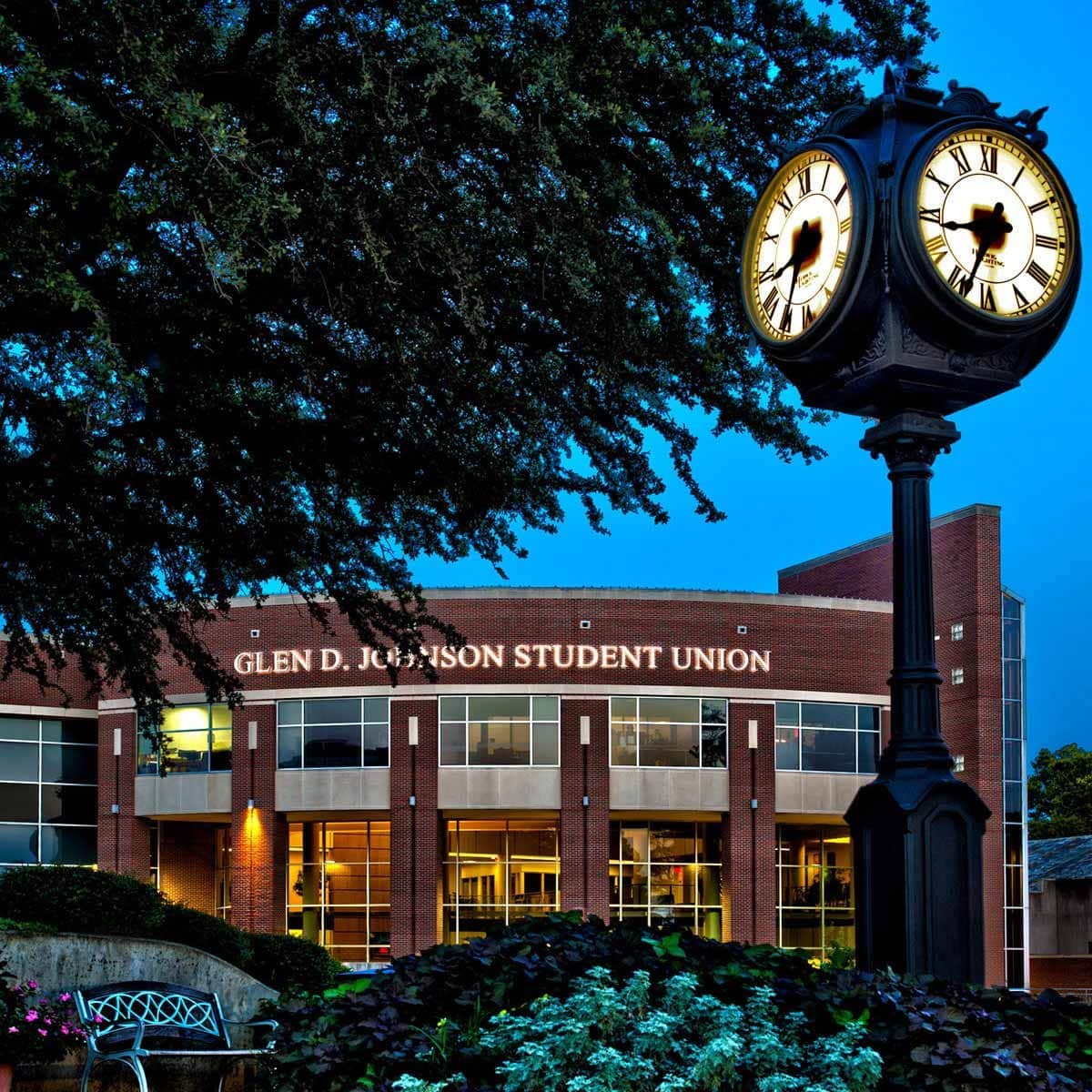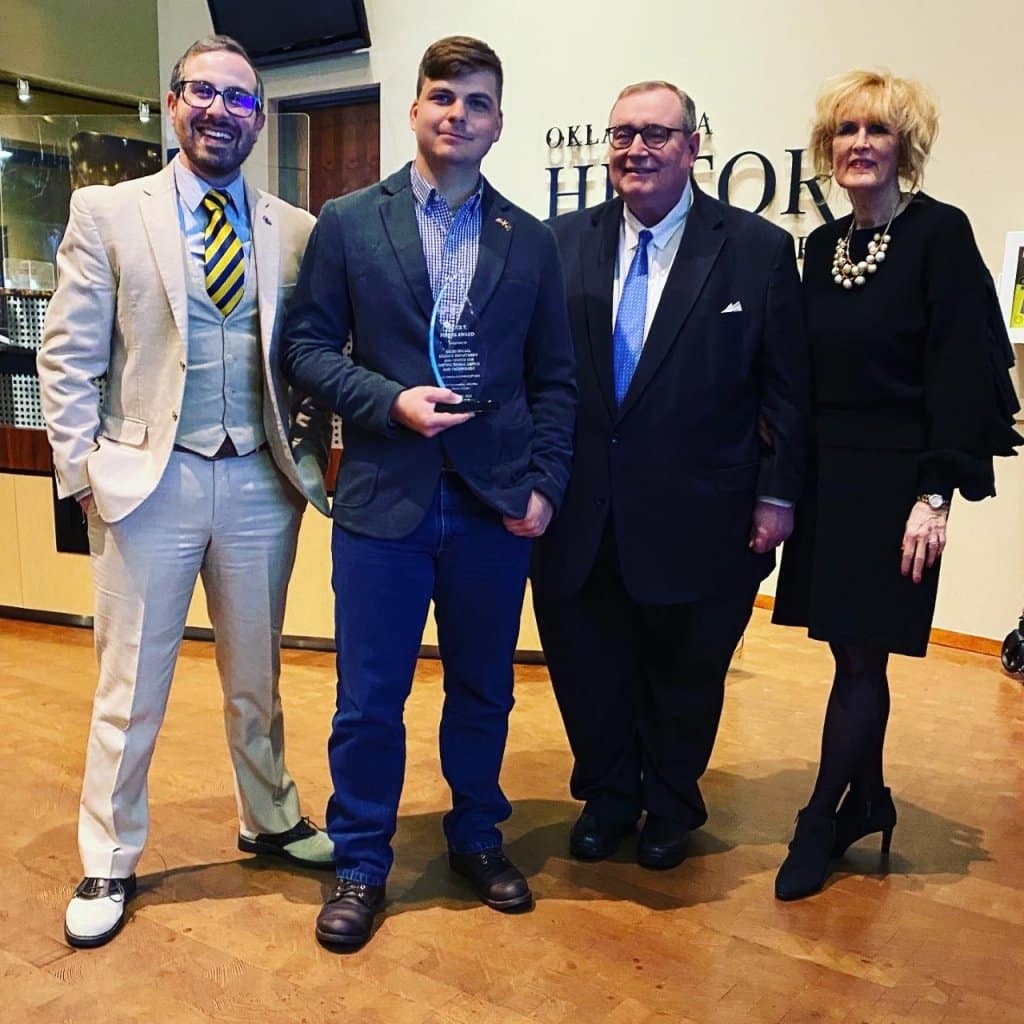
- Home
- News & Events
- SE Social Sciences Department receives award from Oklahoma Historical Society for Fort Washita Rediscovery Project

Dr. Matthew Sparacio and Nathaniel Marshell are joined by Oklahoma State System of Higher Education Chancellor Emeritus and former SE president Glen D. Johnson and wife Melinda Johnson at the awards recognition. The Johnson are longtime supporters of the Historical Society.
Associate Professor of Early American History Matthew Sparacio and Southeastern Oklahoma State University history graduate Nathaniel Marshell traveled to Oklahoma City recently to represent the SE Social Sciences Department and receive an award from the Oklahoma Historical Society for contributions to the “Fort Washita Rediscovery Project.”
This was a collaborative project with the Chickasaw Nation to create an immersive virtual reality module to make the historic site accessible to the greater public. It included virtual avatars, audio, and information hot spots related to the layered Chickasaw, U.S., and Confederate history of the fort.
The Project received the Bruce T. Fisher Award from the Oklahoma Historical Society. The award “recognizes the significant contribution of an individual or organization for projects including but not limited to digital, short-form publications, collections care, film, programs, and exhibits… [that] contributes to broader public knowledge or expands appreciation in any field of Oklahoma history with a project budget of $20,000 or below.”
“Planning for this began all the way back in August 2021, and it is really amazing to see the quality of research our students crafted in a relatively short period of time,” Dr. Sparacio said. “To have their work recognized for such a prestigious award at the state level is a testament to their scholarship, as well as the preparation they’ve received in all their other Social Science courses at Southeastern.”
The “Fort Washita Rediscovery Project” was completed by students in Sparacio’s U.S. Nationalism and Imperialism class during spring 2022. It received support from several different individuals and groups both on and off campus, include rangers Jim Argo and Bryan Stubbs at the Fort Washita Historic Site, Regina Burna of the Chickasaw Nation Museum and Historic Sites, Jennifer Frazee at the Fort Gibson Historic Site, and students working for CIDT who were responsible for taking pictures at the site and stitching the virtual reality landscape together.
Among those individuals contributing to the project from SE were Emma Rindal, Nicholas Herfurth, Taylor Grubbs, Kasen Webb, Andy Kramer, Matthew Sparacio, Nathaniel Marshell, Sarah Owens, Christala Smith, Alisha Ridenour, and Ryan Dority.
The Fort Washita Historic site, located a little more than 16 miles away from Southeastern’s Durant campus, may feel like local history, but the post had important national implications, according to Sparacio.
“Fort Washita was both an expression of U.S. imperial aspirations as well as a way for the recently removed Chickasaw Nation to hold the U.S. accountable to its treaty terms,” Sparacio said.